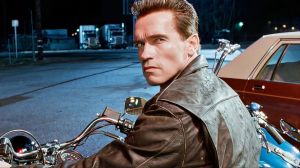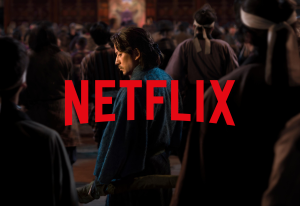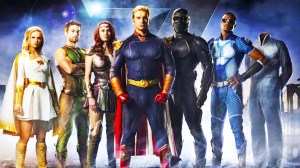Sometimes you don’t know a good thing when you have it right in front of you. Take for example, Stanley Kubrick’s 2001: A Space Odyssey, though now considered one of the best feature films of all time, let alone among the best sci-fi, it had a mixed reception upon release. Though some understood and appreciated it for what it was, others were confounded by it. In the end, time was on its side, and its place in history is cemented. The same can be said for more recent examples, too, like Fight Club, plus Vin Diesel’s sci-fi film, The Chronicles of Riddick.
Videos by ComicBook.com
22 years ago, one of the biggest sci-fi franchises of all time released a surprising sequel, with Terminator 3: Rise of the Machines making its way into theaters. Though considered a lesser follow-up in the grand scheme of the three movies upon its debut, time has been nothing but kind to Terminator 3. That’s not to say that the mixed critical reception has become inaccurate and that reappraisals have found the film to be better than how it was received; it’s that every move by the franchise since its debut has been nearly abysmal, propping up this 2003 movie in a surprising way.
Terminator 3: Rise of the Machines Had Mixed Reactions at the Time
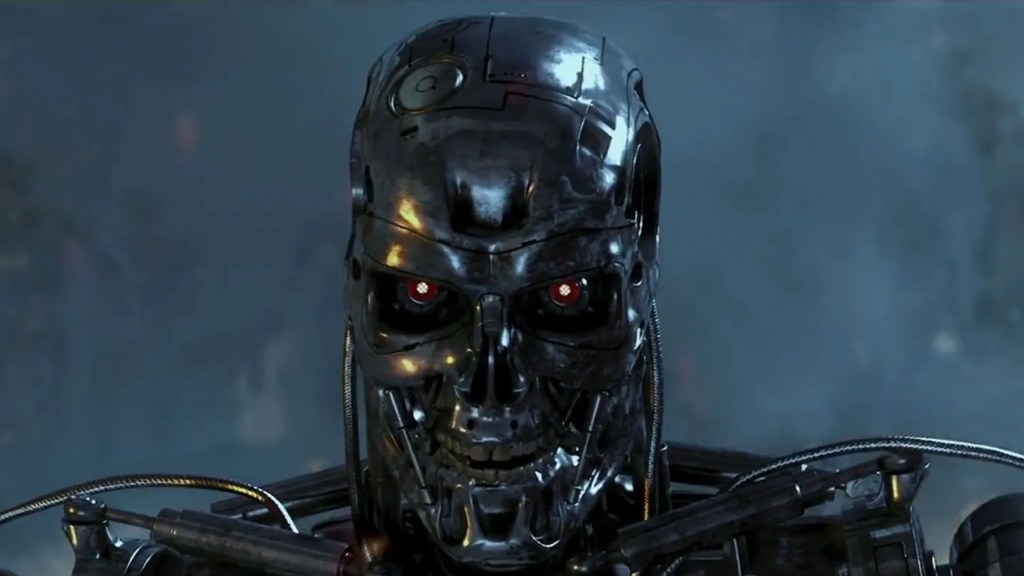
After the monumental success of Terminator 2: Judgement Day, a third film was talked about and developed for years. At times, not only was filmmaker James Cameron attached to write and direct the project, but Linda Hamilton had expressed interest in returning, and Edward Furlong even signed on to reprise the role of John Connor. A tumultuous battle over the rights would carry on for years, though, eventually resulting in Terminator 3 getting made, with the only returning creative partner being Arnold Schwarzenegger. No Hamilton, no Furlon, and no Cameron.
All this had things stacked against Terminator 3, but some creative decisions made in the film also resulted in fans being less than enthused with the final product. One scene, for example, where Schwarzenegger’s T-800 steals clothes after arriving in the past was a parody of the same sequence from Terminator 2. Only this time the Terminator steals his leather biker outfit from a male stripper, learns the expression “Talk to the hand” from the efiminatnte performer, and then puts on what can only be described as Elton John sunglasses on his face. The film attempted to inject humor into the movie in a way that undercut the previous film and disarm the audience, something that may have elicited chuckles from moviegoers but which could also be seen as disrespectful to die-hard fans.
That said, for every attempt that Terminator 3 made to flip the script on the previous movie simply for the sake of a joke, there were others where it managed to actually take the audience by surprise. This is baked into the setup alone as John Connor assumes the new Terminator, the T-X, was sent back in time to kill him, when in fact it was sent by Skynet to kill Connor’s future lieutenants, as Connor himself has already died in the future. Furthermore, he assumes that the T-800 has been sent back in time by him, as he previously sent Kyle Reese in the first movie and the T-800 in Terminator 2. Once again, a twist, as Kate Brewster, his future wife, is the one responsible for the machine’s arrival.
Terminator 3: Rise of the Machines holds a 70% approval rating on Rotten Tomatoes, not a truly terrible score but one that stands out compared to The Terminator‘s 100% and Terminator 2‘s 91%. Roger Ebert awarded the movie 2.5 out of 4 stars, noting that the sequel “abandons its own tradition” of being steeped in proper science fiction and being augmented by special effects, not being defined by it. He went on to say that the film was “dumbed down for the multiplex hordes,” and in truth, his assessment was reflective of the larger feelings of the sequel upon its release and the years that followed. For a time.
Compared to What Came Next, Terminator 3 Looks Pretty Good Now
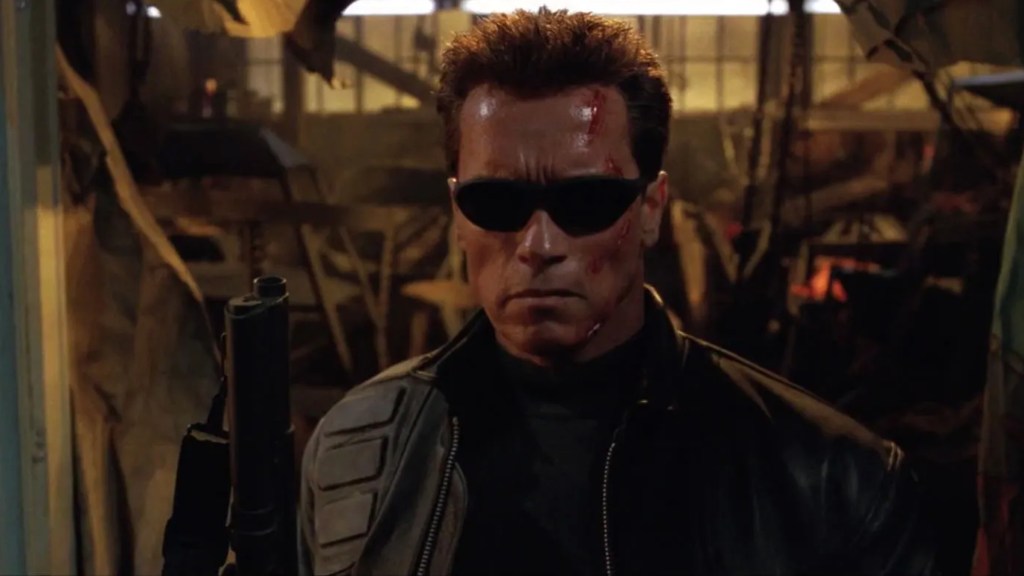
Despite criticism that the film couldn’t match the movie that came before it, Terminator 3 grossed over $433 million at the global box office (adjusted for inflation, that’s nearly $763 million, a total that would make it the fifth highest-grossing movie of 2025). The success of the film, of course, meant that the series would be back, and thanks to the primary critique of the film’s structure, changes had to be made.
Terminator Salvation, the fourth movie in the series, did pick up on some of the plot threads that began in Terminator 3, at least attempting to keep the larger franchise cohesive. One of these is that Bryce Dallas Howard takes on the role of Kate, the character originally played by Claire Danes in Rise of the Machines. Salvation began as the movie that fans had wanted to see for decades, depicting the machine war with the humans in the post-apocalypse; however, the film removed much of the aesthetics from Cameron’s depiction of the future, moving toward a grittier take on the ideas. This, coupled with stale direction by McG and Schwarzenegger not actually appearing (a body double with a CGI face arrives late in the film), Terminator Salvation stopped the franchise dead in its tracks.
Years later, a new reboot, Terminator Genisys, would arrive, recasting every role, except for Arnold Schwarzenegger, with fresh, modern faces. The other trick up its sleeve was that Genisys would do its best to remix the larger continuity by revisiting key moments and characters, but with a twist on how they played out to subvert the audience’s expectations. That was achieved, but not how the filmmakers intended, as its convoluted storyline and attempts to preserve continuity resulted in a bloated, overstuffed addition.
Finally, the latest film in the series, Terminator: Dark Fate, attempted to follow the Halloween playbook and wipe the slate clean. When this movie arrived, it did so knowing the baggage that the franchise’s continuity had become and instead opted to say only The Terminator and Terminator 2 are canon to this story. And frankly, it kind of worked. Critically, this became the first movie since Rise of the Machines to have a positive Tomatometer score; however, there was one last twist in store for the film: the public’s interest.
The Terminator Franchise Is Still in Trouble

Even before 2019’s Terminator: Dark Fate flopped at the box office, the larger franchise’s place in the court of public opinion was in dire straits. Starting with 2009’s Terminator Salvation, the rights to the franchise were set up at a new studio with intentions to kick-start a brand new trilogy of movies. After that film failed to generate a sequel, 2015’s Terminator Genisys was announced and developed with the same intention. Despite ending on a cliffhanger, that film had the same franchise plan: a new trilogy to keep the series going. Critical drubbing and middling box office once again kept the story from being finished.
If you’re seeing the pattern, you can guess how Terminator: Dark Fate was also created. Not only did the movie pretend that no other movies in the series had happened since Terminator 2, Dark Fate arrived hoping to be, once again, the first in the start of a new trilogy. Despite the involvement of James Cameron and the return of Linda Hamilton after decades, Terminator: Dark Fate became the lowest-grossing sequel in the entire series and once again killed the franchise’s future, at least for a few years.
So where does the series go now? Cameron has teased he’s been tapped to work on a new story in the franchise, but to date, nothing concrete has been announced, with the filmmaker himself noting he has no ideas. In truth, no one knows what comes next for Terminator, but the series has fallen apart in tremendous fashion since 2003, to the point where we have to look at Terminator 3: Rise of the Machines as a surprising bright spot in a series that has become defined by ill-advised and poorly conceived sequels. It only took twenty years, but Terminator 3 can now say that it’s absolutely one of the better follow-ups to James Cameron’s original movies.

